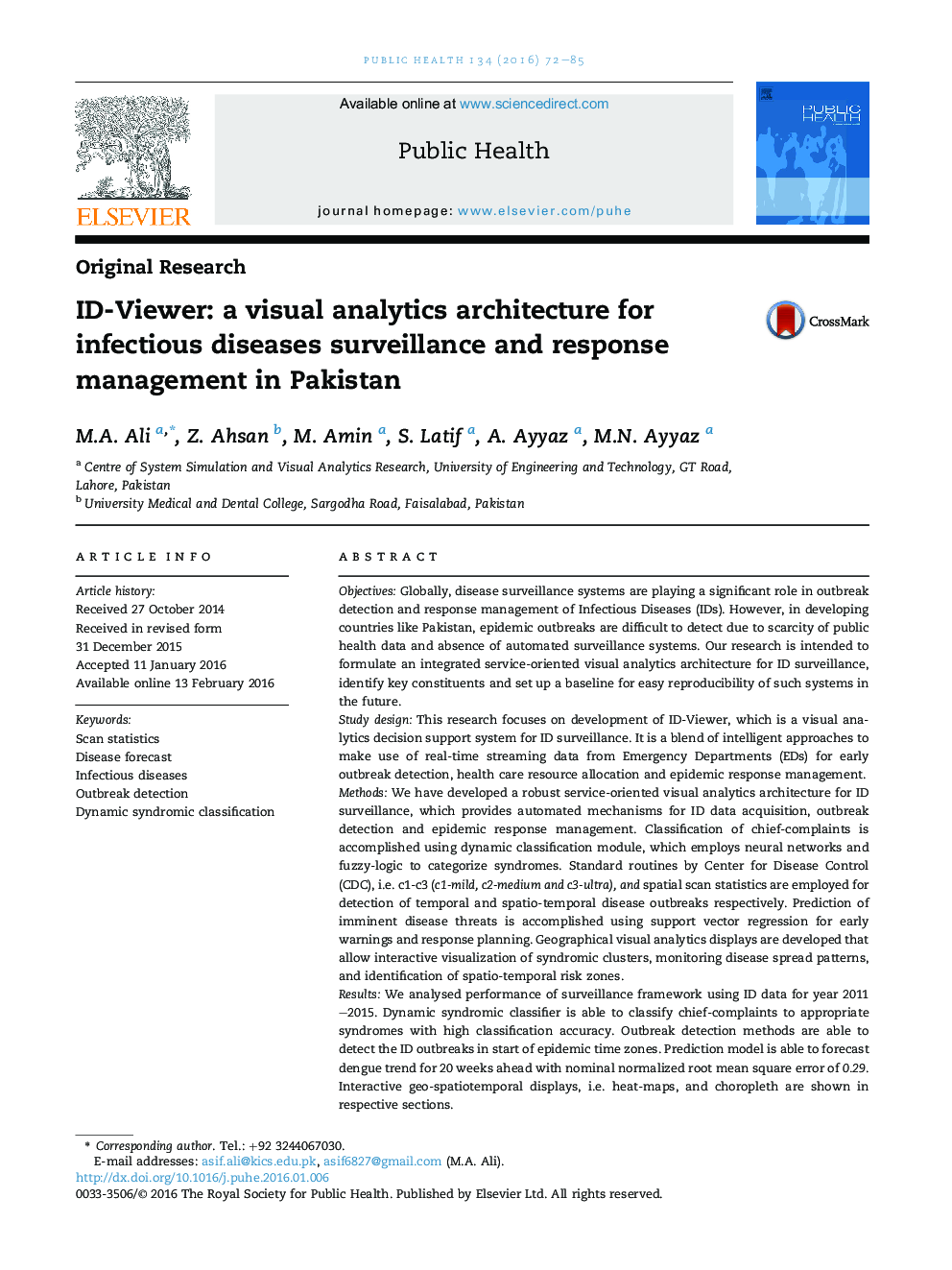| کد مقاله | کد نشریه | سال انتشار | مقاله انگلیسی | نسخه تمام متن |
|---|---|---|---|---|
| 1087319 | 1487209 | 2016 | 14 صفحه PDF | دانلود رایگان |
• Integrated service-oriented architecture for ID surveillance in resource-constrained regions.
• This study sets up a baseline/ground for development of ID surveillance systems in the future.
• Weather parameters taken along with chief complaints improve syndromic classification.
• SVR-based prediction model is efficient in depicting future disease trends using less historical data.
• Interactive visual analytics framework plays a key role in ID data exploration and disease control activities.
ObjectivesGlobally, disease surveillance systems are playing a significant role in outbreak detection and response management of Infectious Diseases (IDs). However, in developing countries like Pakistan, epidemic outbreaks are difficult to detect due to scarcity of public health data and absence of automated surveillance systems. Our research is intended to formulate an integrated service-oriented visual analytics architecture for ID surveillance, identify key constituents and set up a baseline for easy reproducibility of such systems in the future.Study designThis research focuses on development of ID-Viewer, which is a visual analytics decision support system for ID surveillance. It is a blend of intelligent approaches to make use of real-time streaming data from Emergency Departments (EDs) for early outbreak detection, health care resource allocation and epidemic response management.MethodsWe have developed a robust service-oriented visual analytics architecture for ID surveillance, which provides automated mechanisms for ID data acquisition, outbreak detection and epidemic response management. Classification of chief-complaints is accomplished using dynamic classification module, which employs neural networks and fuzzy-logic to categorize syndromes. Standard routines by Center for Disease Control (CDC), i.e. c1-c3 (c1-mild, c2-medium and c3-ultra), and spatial scan statistics are employed for detection of temporal and spatio-temporal disease outbreaks respectively. Prediction of imminent disease threats is accomplished using support vector regression for early warnings and response planning. Geographical visual analytics displays are developed that allow interactive visualization of syndromic clusters, monitoring disease spread patterns, and identification of spatio-temporal risk zones.ResultsWe analysed performance of surveillance framework using ID data for year 2011–2015. Dynamic syndromic classifier is able to classify chief-complaints to appropriate syndromes with high classification accuracy. Outbreak detection methods are able to detect the ID outbreaks in start of epidemic time zones. Prediction model is able to forecast dengue trend for 20 weeks ahead with nominal normalized root mean square error of 0.29. Interactive geo-spatiotemporal displays, i.e. heat-maps, and choropleth are shown in respective sections.ConclusionThe proposed framework will set a standard and provide necessary details for future implementation of such a system for resource-constrained regions. It will improve early outbreak detection attributable to natural and man-made biological threats, monitor spatio-temporal epidemic trends and provide assurance that an outbreak has, or has not occurred. Advanced analytics features will be beneficial in timely organization/formulation of health management policies, disease control activities and efficient health care resource allocation.
Journal: Public Health - Volume 134, May 2016, Pages 72–85
